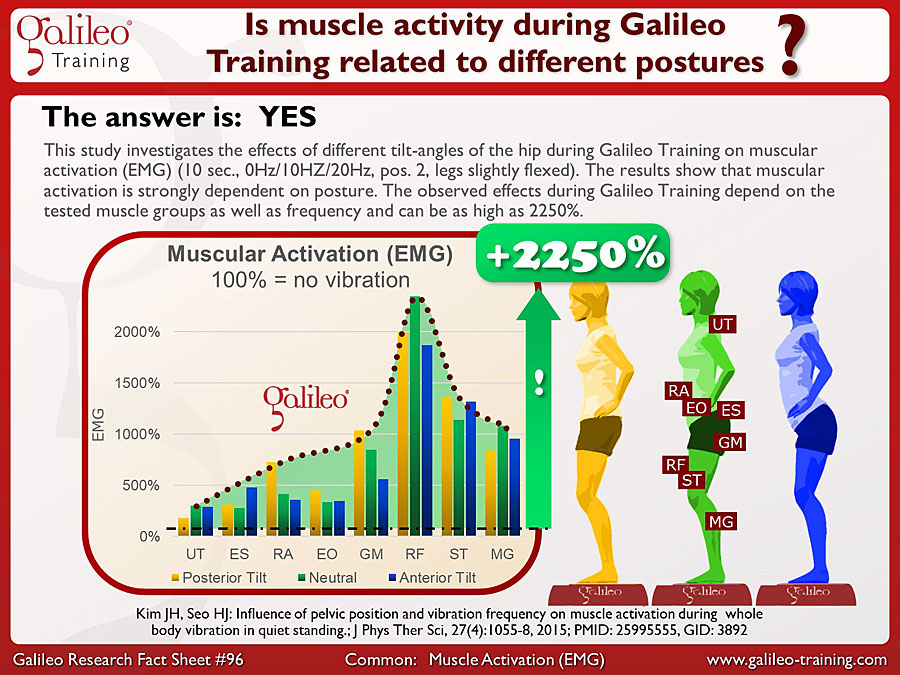Galileo Research Facts No. 96: Is muscle activity during Galileo Training related to different postures?

This study investigates the immediate effects of Galileo Training using different postures (hip tilted anterior/neutral/posterior) on the activation (EMG, Electromyogram) of different muscle groups (from calf to neck). The measurement was done by EMG signals where the frequency range of 50 to 300Hz was analyzed. The individuals stood in almost upright position with slightly flexed knees and EMG signals where recoded over a period of 10 seconds.
The results showed a significant increase of muscle activation with increasing frequency: Higher frequencies (20Hz) caused significantly higher muscle activation compare to low frequencies (10Hz) or no vibration. Effects also strongly depend on the individual muscle group and can show up to 2250% – where the 100% mark is the identical posture without vibration stimulus. This study documents what everybody can try himself standing on the Galileo and tilting the pelvis forward. However, these results are not even the maximum possible, since Ritzmann et.al. showed that frequencies of 30Hz and a wider foot position (Pos. 3) showed even higher muscle activation #GRFS23. In addition, this increase can further increased by using squats or additional loading (#GRFS4).
Ritzmann also could prove, that it does not make sense to filter the vibration frequency from the EMG signal, since every movement of the platform actually triggers a stretch-reflex and hence a significant component of the EMG signal must be at the vibration frequency (#GRFS101).
In summary an activation of significantly above the observed 2250% is to be expected if higher frequencies, higher amplitudes and an optimized EMG signal analysis methos are used.
#GRFS95 #GalileoTraining #VibrationTraining #MechnoStimulation #EMG #Muscle Activation #FrequencyRange #Frequency #Workout
- Produktgruppen: Galileo Therapy, Galileo Training
- Themen: Basics